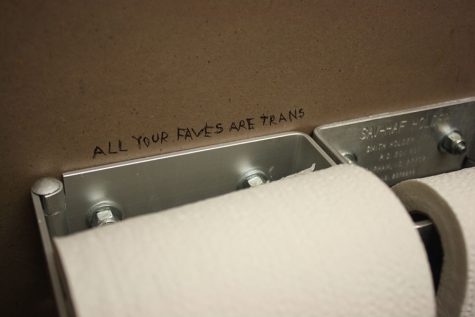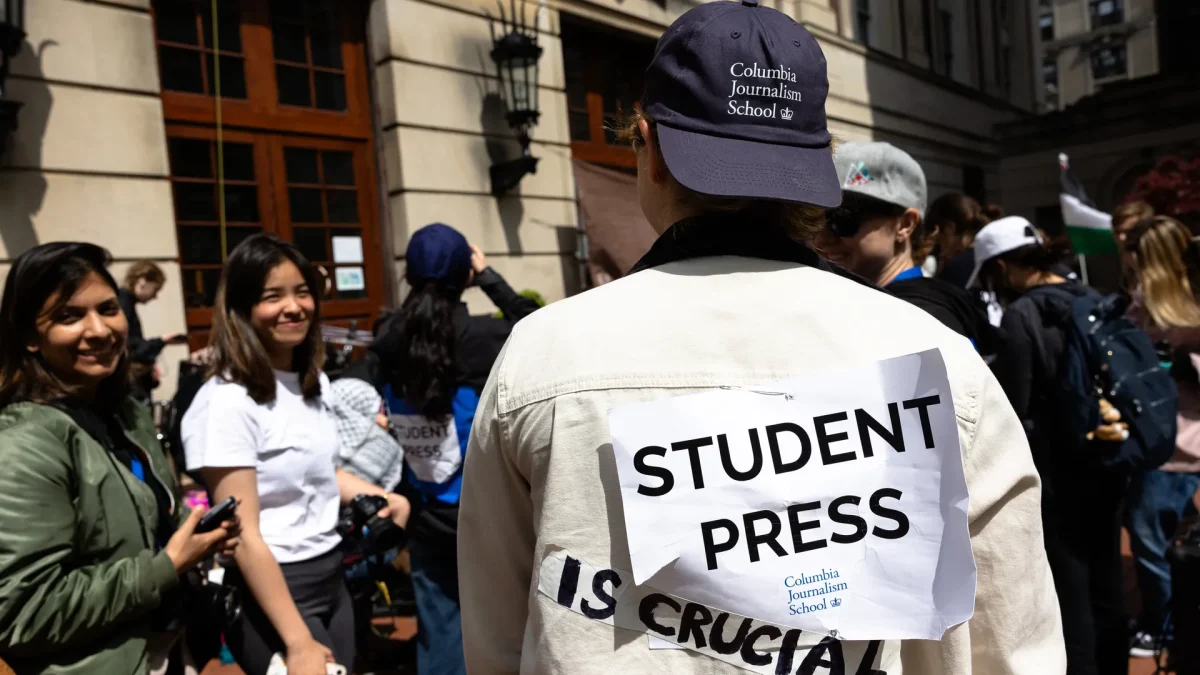Transgender stories go deeper than just bathrooms
May 28, 2016

The stories about transgender people that are making headlines recently have been about which bathrooms they should and shouldn’t be allowed to use. North Carolina recently passed the Public Facilities Privacy & Security Act, saying that people must use the bathroom that matches the gender that is on their birth certificate. Former presidential candidate Ted Cruz fully supported it, saying, “men should not be going to the bathroom with little girls.” On the over hand, the Obama administration issued a directive saying that schools must allow students to choose the bathroom that best matches their gender identity. These events have limited the image of what it means to be transgender.
What’s the story at South High? Last year, South opened up the gender neutral bathroom, “which is relatively unique certainly in the state … we were the first in the district,” explained social worker Katie Fritz (she/her). This is clearly a big deal to the staff and students here, but also lots of the students who the bathroom was created for would conclude the same thing. However, the struggles trans and nonbinary students face don’t end with adding a gender neutral bathroom.
For non-cis people, or people who don’t identify with their sex assigned at birth, transitioning from what people perceive you to be to who you truly are can be a big deal. You can face all sorts of bumps in the road, especially when you’re still in school. “I tried to [come out] last year at Roosevelt, but no one really listened to me,” explained Esposito. Often people, such as Esposito, have to take smaller steps instead of just jumping right into their preferred identity.
“Over the summer, my friends were fine with it. They called me my preferred name and pronouns and all that, and now that I’m here- instead of Roosevelt – […] no one calls me my birth name or anything, so it’s way better now,” they added.
There are many different gender identities. There’s the binary, male and female. People who identify with these genders as they were born are cisgender. Then there’s transgender, someone whose gender identity doesn’t match the gender they were assigned at birth. However, that’s not all there is! There are people in between, outside of the box, and people whose gender is fluid.
It’s common for people who identify as one of the above to not quite know so until they’re older. “I didn’t really know anything about gender stuff, all I thought was, ‘Oh, I dress like a dude and that’s that’, and then as I found out more about it, I was like ‘Oh that’s not what it is’.” explained Esposito.
“For me, [being trans is] just kind of a state of mind, I guess. It just is. There’s nothing you can really do about it, it’s just kind of there, you can pretend that you’re not but that’s hard and it’s very depressing,” explained freshman Oliver Piotrowski (he/him).
“Teachers have always been super respectful,” said Esposito. Esposito explained that they didn’t feel like they had to work super hard for that respect.
“Other than correcting subs, people are way more respectful than those at Roosevelt, and I’m not trying to knock Roosevelt or anything, but it wasn’t as much of an accepting place,” Esposito said.
Fritz agrees, saying that teachers here are usually quite accepting. “In my experience, teachers have been really open to that, and I’ve helped some students sort of facilitate that with their teachers if they are really uncomfortable or don’t feel like it’s going well. Teachers are people, so they forget and they mess up, but for the most part they really want to be trying and respecting students’ choices on those things,” she commented.
As of December this last year, there have been new rulings to benefit trans students who play in school sports.
“There’s a new statewide policy that allows transgender students to participate in sports [as]the gender that they identify with, so that’s a big deal,” recalled Fritz. Before this ruling, girls were allowed to play in “all boy teams”, but that was an issue of sexism, not of transphobia. It also didn’t account for MTF (male to female) students who wanted to play on “all girls teams.” But now, students in Minnesota can play on a team that they identify with.
The ruling came from the Minnesota State High School League (MSHSL) last December and states, “allows participation for all students regardless of their gender-related identity or expression.”
There are all sorts of resources for transgender/genderqueer/gender non-conforming/gender fluid students in Minneapolis. Events such as Queer Prom and Gender Jam are places where queer (used as an umbrella term) youth can go and be themselves with other youth who understand. “Big events that are advertised on Facebook for queer youth, I’m like I’m gonna be there! Every time,” explained Esposito, laughing.
Even just inside South, there are resources that can and should be used. “A couple years ago we folded the GSA in the LGBT support group which meets during the school day,” explained Fritz, who co-facilitates the group. “It’s not a classic support group, because it’s bigger than what would be a therapeutic support group, so it’s really more about the social support than it is about therapy.”
Fritz also explained how she often gets pointed to when students want resources, because of her involvement with LQBTQ youth. “There are teachers who will refer students to me who have questions or need resources around gender and sexuality even if I‘m not their assigned social worker.” Fritz isn’t the only person you can go to for support, however. “Any of the social workers would be more than equipped to help support someone or offer resources or do the things I was talking about with facilitating or sort of advocating with teachers,” she said.
Misunderstanding leads people to act out violently against trans and nonbinary people. “Statistically, more trans people get hurt in bathrooms. They’re not the ones attacking anybody, it’s cis people being like, ‘Oh, get the hell out of here, you’re not supposed to be here’. So it’s more unsafe for trans people than anyone else in this situation,” explained Esposito.
In or outside of South High, the safety of trans and nonbinary students relies on educating and working for respect of all identities.












